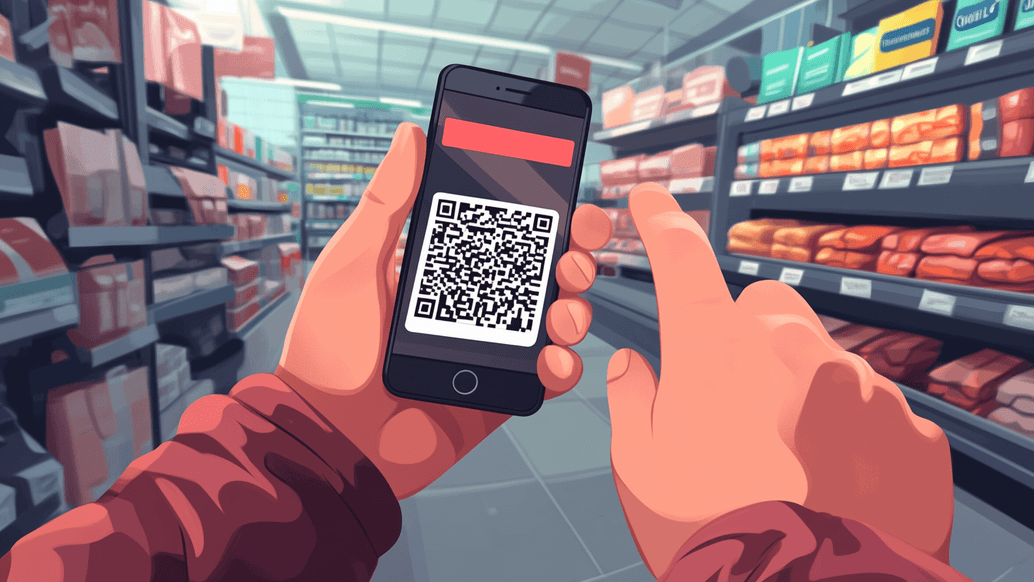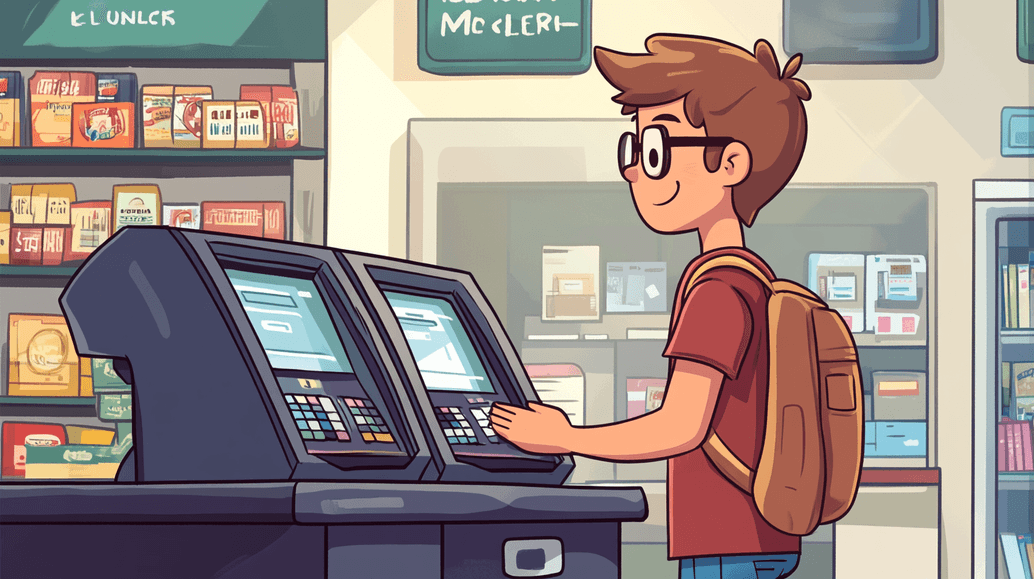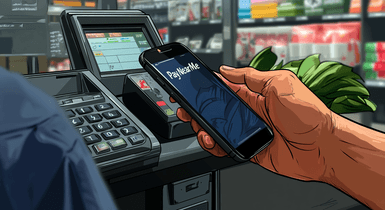Alternative Payment Methods: Secure and Convenient Options
Contents

There is no denying that alternative payment methods are on the rise. Paying with your phone at the store or using Venmo to split the bill has become the new norm. There is a wide variety of apps and platforms offering such services, with some being more popular in certain regions or among certain age groups.
In this article, you will learn about various credit card alternative payment methods, their advantages, and what to look for when choosing one.
What Are Alternative Payment Methods?

What is an alternative payment method exactly? The term refers to any payment solution that doesn’t rely on using cash or debit/credit card. They are a relatively new invention, possible only thanks to the technological advances of recent years.
Similarly to traditional payment methods, you can use an alternative payment option to transfer and accept funds, but with a higher level of convenience, speed, and flexibility. You can pay on the go with nothing more than a smartphone, whether you transfer money through an app or press your NFC device to a terminal. As the tech continues to evolve, we will no doubt see even more sophisticated payment solutions.
Popular Alternative Payment Methods

Do you wonder what alternative payment options are most widespread nowadays? You’re probably using several of those yourself!
Digital Wallets & Mobile Payments
The current top alternative payment method is a digital wallet. All you need to do is install a wallet app on a smartphone that has near-field communication (NFC) technology. Once you’ve linked your bank account to the app, you can use your phone to pay wherever you might go. You can also use the app to pay for online purchases.
The most popular digital wallets as of 2024 are Google Pay, Apple Pay, and PayPal.
Cryptocurrencies
Cryptocurrencies were all the rage in the early 2000s, and while the hype has currently died down a bit, they remain quite popular. This idea behind currencies is that they are entirely digital and obtained through mining—the use of computing power to solve complex equations.
While we still do not live in a world where cryptocurrency payments are common, there are quite a few services you can get in exchange for a fraction of a bitcoin. Some businesses accept crypto payments, and the benefits of such payments are easy to see: fewer fees, anonymity, and absolutely no third-party involvement. However, cryptocurrencies are uniquely susceptible to market speculation, price fluctuations, and volatility. The unregulated environment of crypto has also become all but synonymous with scams and frauds.
The biggest cryptocurrencies right now are Bitcoin, Ethereum, and Tether.
Buy Now, Pay Later (BNPL) Services
Any list of payment methods wouldn’t be complete without mentioning BNPL. With this tool, you pay for an item in portions rather than in full. This way, you can buy something you need even when you don’t have the entire sum upfront. What makes BNPL so appealing to customers is that you don’t need a credit card and that it’s interest-free.
Klarna and Afterpay are good examples of widely used BNPL services.
Peer-to-Peer Payment Systems
If you need to transfer money to a person you know, you can do so quickly and easily by using a peer-to-peer payment system. In most cases, such transactions are done through apps. All you do is deposit money from your bank account or credit/debit card directly to the app.
Popular P2P solutions include Zelle and Venmo.
Prepaid Cards
With a prepaid card, you need to add money to it before you can use it. While this sounds a lot like a debit card, the difference is that a prepaid card is not connected to your bank account. Such cards can be used for bill payments, shopping, and to withdraw cash. Keep in mind that you cannot spend more funds than you add, as it doesn’t function as a credit card.
Direct Bank Transfers
Another method that is rapidly rising in popularity is direct bank transfers. The way it works is that money is moved from one account to another electronically. In the US, the most common option is ACH—Automated Clearing House payment. This solution has lower fees for businesses, a good level of security, and can be easily scaled for use by large businesses.
SEPA, the European Union equivalent of ACH, has become particularly popular thanks to the EU’s adoption of instant payment regulation at the start of 2024.
QR Code Payments
QR code payments also fall into this category. Lots of businesses were offering customers the ability to scan QR codes to pay for goods and services for some time now. This method is particularly popular in Asia. According to the 2022 survey published on Statista, approximately 59% of respondents in Southeast Asia used QR code payments. The numbers are expected to become even higher in a few years.
Advantages of Alternative Payment Systems

Now that you know about popular payment alternatives, here are the main advantages associated with these solutions:
- Convenient for users
Paying without cash or a credit card is highly convenient. Most people have their smartphones with them at all times so that they can make a transaction in just a few swipes.
- Lower fees for businesses
If you have a business, you will undoubtedly benefit from making alternative payment methods available to your customers. The reason is quite simple: these tend to have lower transaction fees when compared to the use of credit cards.
- Enhanced security measures
Paying your phone is far safer than using cash. Biometric authentication methods, such as facial and fingerprint recognition, make payments more secure than ever.
Another security measure is tokenization—a mechanism of replacing your crucial account data with a set of unique numbers known as tokens. This way, no one except you will have access to it.
- Catering to a global market
One of the most prominent advantages of alternative payments is that they allow businesses to reach their customer base all around the globe. Traditional solutions charge hefty fees for international transactions and typically have more restrictions attached.
Challenges and Risks

While alternative methods of payment have many advantages, they still have some notable drawbacks. The risks include:
- Security threats and identity theft
Traditional payment methods often have stricter rules regarding fraud detection and verification processes compared to the alternative options. Also, while mitigating the risks associated with cash, digital payments create a whole new array of security challenges: hacking, phishing, identity theft, and many more.
- Regulatory obstacles
Alternative payment tools are not as widespread as we’d like them to be. There are regions and countries where certain payment methods are not accepted at all or are limited, so it’s something to be aware of.
- Limited acceptance by merchants
Alternative online payment methods are also not as widely accepted by merchants as traditional ones. Numerous businesses and merchants don’t offer any payment alternatives, so you will need to use your credit card or cash to purchase something.
- Hidden costs and fees
Additional fees and hidden costs may come as a surprise for inexperienced users. If you own a business, it’s important to thoroughly review all the service or processing fees before you present the new payment method to your customers.
Choosing the Right Alternative Payment Solution

Consider some key factors:
- Adoption rates
For a business, it’s crucial to keep in mind where your customers come from. For example, PayPal is all the rage in the United States, and Alipay is the go-to option in Asia.
- Ease of use
The ease of use is crucial both for businesses and customers. Your customers shouldn’t struggle to try to pay for your goods, as otherwise, you will lose them in no time.
- Security
You have to pay attention to the solution’s security features, such as biometric authentication, tokenization, and data encryption.
- Cost
Some payment methods can be convenient for customers but come with high processing and service fees, so you should weigh out your options before making a decision.
- Customer preferences
It’s a good idea to consider your customers’ preferences. Who are your potential customers? What’s their age? For example, younger people are more likely to use payment apps. Asking for feedback is a good strategy for choosing the right options.
- Alignment with the business model
The choice of an optimal payment method also depends on your business model. If you have an online store, you should provide access to several payment options so customers can buy anything quickly. Businesses that offer services should consider solutions that allow recurring payments.
Future of Alternative Forms of Payment

And what does the future hold for alternative payments methods?
One of the key trends of 2024 is decentralized finance. DeFi includes financial products not regulated by a central authority, such as payment apps, loans, etc. Thanks to DeFi, there is an increased use of cryptocurrency blockchain transactions, which makes the industry more accessible to a wider audience.
Also, it is already clear that AI is here to stay and will change a lot about our lives, and payment solutions are no exception. The key ways in which AI and machine learning are shaping the payment landscape include:
- Detection of potential fraud and any suspicious activity;
- Tailoring of products and services to the needs of customers;
- Assessment of buyers’ creditworthiness, etc.
Based on the Juniper Research study, the value of contactless transactions is expected to grow by about 113% from 2024 to 2029. It is obvious that we can expect more new solutions and apps to hit the market.




